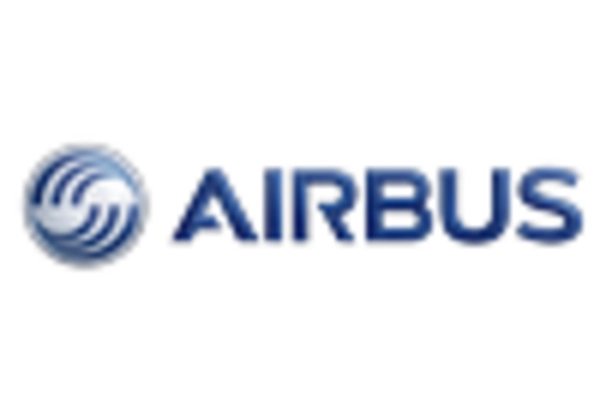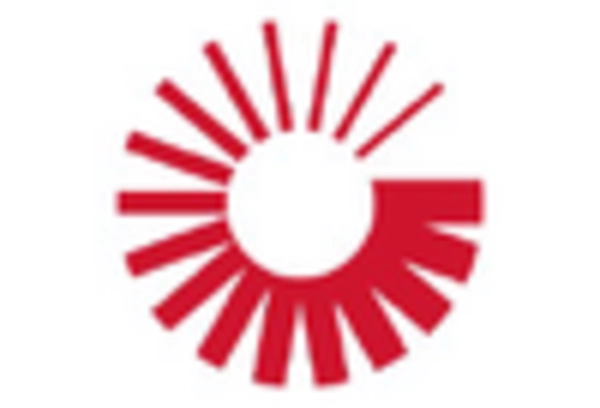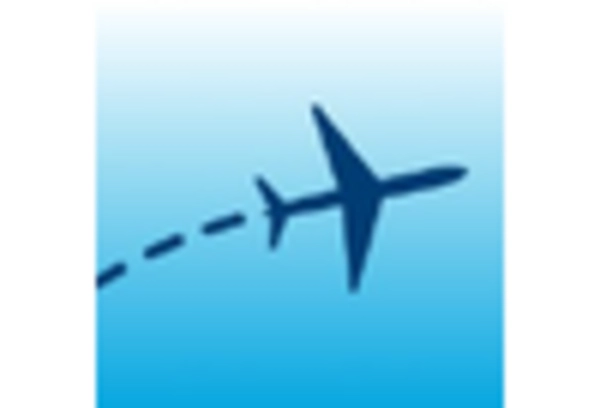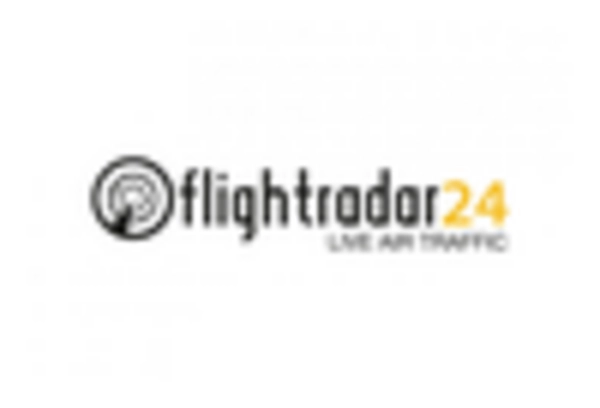Increased Demand for Real-Time Data
The demand for real-time data in the aviation sector is a significant driver of The Global Flight Tracking System Industry. Airlines, airports, and passengers increasingly rely on accurate and timely information regarding flight status, delays, and routing. This demand is fueled by the growing expectations of travelers for transparency and efficiency in air travel. Recent statistics indicate that The Global Flight Tracking System Market is expected to reach USD 5 billion by 2026, reflecting a robust growth trajectory. The ability to provide real-time updates not only enhances customer satisfaction but also optimizes operational efficiency for airlines. Consequently, companies are investing in advanced tracking technologies that can deliver precise data in real-time, thereby reinforcing their competitive edge in the market.
Regulatory Compliance and Safety Standards
Regulatory compliance is a critical driver in The Global Flight Tracking System Industry, as governments and aviation authorities impose stringent safety standards. The International Civil Aviation Organization (ICAO) mandates that all commercial aircraft be equipped with tracking systems to enhance safety and accountability. This regulatory push has led to increased investments in flight tracking technologies, as airlines strive to meet compliance requirements. The market is witnessing a surge in demand for systems that not only comply with existing regulations but also anticipate future regulatory changes. As a result, companies that develop flight tracking solutions are focusing on creating adaptable systems that can evolve with regulatory landscapes. This trend is expected to contribute to the overall growth of the market, as compliance becomes a non-negotiable aspect of aviation operations.
Expansion of Air Travel and Aviation Sector
The expansion of the aviation sector is a crucial driver for The Global Flight Tracking System Industry. As air travel becomes more accessible and affordable, the number of flights and passengers continues to rise. This growth necessitates enhanced tracking systems to manage the increasing volume of air traffic effectively. According to industry forecasts, the number of air passengers is expected to double in the next two decades, leading to a corresponding increase in the demand for flight tracking solutions. Airlines are recognizing the need for sophisticated tracking systems to ensure safety, efficiency, and compliance with regulations. This trend is likely to propel the market forward, as stakeholders seek to invest in technologies that can accommodate the burgeoning air travel landscape.
Technological Advancements in Flight Tracking
The rapid evolution of technology plays a pivotal role in shaping The Global Flight Tracking System Industry. Innovations such as satellite-based tracking systems and real-time data analytics enhance the accuracy and efficiency of flight monitoring. The integration of artificial intelligence and machine learning algorithms allows for predictive analytics, which can improve operational efficiency and safety. According to recent data, the market for flight tracking systems is projected to grow at a compound annual growth rate of approximately 10% over the next five years. This growth is driven by the increasing demand for real-time tracking solutions that provide airlines and passengers with timely information. As technology continues to advance, the capabilities of flight tracking systems are expected to expand, further solidifying their importance in the aviation sector.
Focus on Operational Efficiency and Cost Reduction
The pursuit of operational efficiency and cost reduction is a driving force in The Global Flight Tracking System Industry. Airlines are under constant pressure to minimize operational costs while maximizing service quality. Flight tracking systems provide valuable insights that enable airlines to optimize flight routes, reduce fuel consumption, and enhance overall operational performance. By leveraging data analytics, airlines can identify inefficiencies and implement corrective measures, leading to significant cost savings. Recent analyses suggest that airlines utilizing advanced flight tracking technologies can reduce operational costs by up to 15%. This focus on efficiency not only benefits airlines financially but also contributes to a more sustainable aviation industry. As such, the demand for innovative flight tracking solutions is likely to continue growing as airlines strive to balance profitability with operational excellence.















Leave a Comment